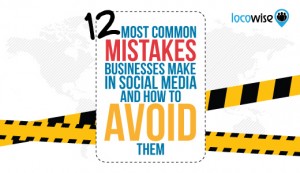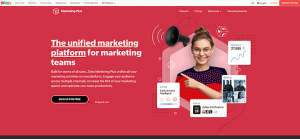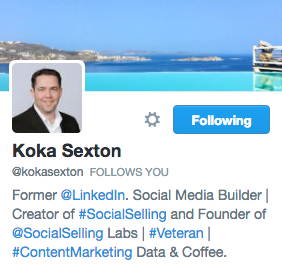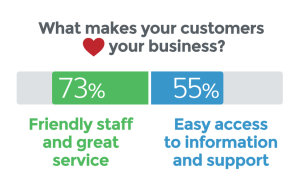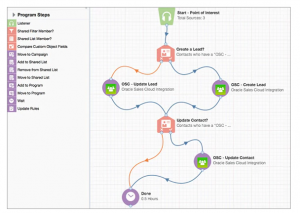
Search engine optimization today is not just about backlinks or content (although those factors are integral). In fact, it involves a broad range of services which include web design, social media, and reputation management. Focusing on only one element – be it content or links – is vain because a) you sacrifice other factors that could drive MORE traffic to your website, as well as b) waste time and energy on a short term strategy.
When it comes to success, we want it all – and there’s nothing wrong with that. The best SEO companies out there are successful because they know how to leverage all the elements in search engine optimization: from backlinks, content, to social media. This results to long-term benefits because each factor works hand in hand with the others; allowing for seamless optimization that’s neither spammy nor redundant.
You and your website can get the best of both worlds by employing on- and off-page SEO elements. It’s going to be painstaking at first. But if you want better traffic long after the campaign is over, then you have nothing to lose. In fact, by using on- and off-page SEO, you get flawless integration that’s user- AND search engine-friendly. Here’s how:
Identifying and Fixing On-Page SEO Components
Change needs to start from within. Before you can experience all-around success, begin by identifying parts of your website that might be blocking user experience and proper search engine crawling. If you’re new in this area, you can ask help from a professional SEO consultant. In general, there are seven factors you need to take a close look at:
- Type and quality of content
- On-site elements (such as page titles and meta descriptions)
- Optimized Images
- On-site blog
- Page load speeds
- Mobile-friendliness
- Broken links/redirects (internal linking)
Type and Quality of Content

Content is technically everything on your website: from text, images, videos, to web copy. Having the right kind and quality of content is crucial if you want to a) boost the time a user spends on your site, b) be considered a topic authority, and c) make Google happy. It all boils down to your industry: in what business are you and what do you offer to your customers? Are more product-based or service-based? Once you have a tight grasp on your niche, then can you create the most appropriate content that will inform, educate, and tease online users.
One of the most popular content types today is videos. Unlike articles and images, videos utilize both audio and visual signals; making them easier to digest and more fun to watch. In fact, several market researches reveal that these are consumed by people throughout various parts of the day – during their commute to school or work, at their lunch breaks, and before bedtime.
Popular social media platforms have taken necessary steps to make viewing videos more user-friendly. For instance: Twitter has launched the app Periscope, so that their users can quickly upload short videos, ready to be shared in online communities worldwide. If you haven’t thought about taking advantage of videos for your SEO campaign, ask your digital marketing expert about its advantages today.
Onsite Elements
Most people – even search engines like Google – like things that are clean and organized. Would you read a blog or magazine that looks as if they’ve been put together in a hurry? Of course not! The same is true for websites. Onsite elements such as H-tags, meta descriptions, sitemap, and page titles, are just a few factors that help your site look structured for both users and search engines.
Managing onsite elements is actually one of the best strategies to optimize your website without building links. Just go to your website, check missing elements, and fill them in. Paying attention to these details ensure that search engines can easily crawl and index your pages for better chances at ranking. When your pages look seamless, users are happy, too!
Optimized Images
Images on your site are a vital aspect of what keeps users engaged. It’s rare to find websites that are text-based only (unless it’s absolutely necessary for your brand). Pictures say a thousand words – literally. Did you know that in just one minute, the Web experiences the following in terms of images:
- Instagram receives about 3,600 photo uploads
- 20,000 photos get uploaded on Tumblr
- Flickr receives 20 million photo views
- 104,000 images gets shared on SnapChat
- 11,000 users Pin photos on Pinterest
Wow, those are a LOT of pictures! As much as they make your web pages awesome though, images also take up plenty of space. The downside is slower page speeds. Don’t let beautiful images ruin your SEO: optimize them using WordPress photo plugins so that your pictures are automatically shrunk in size, but not in quality.
If you don’t have stunning photos to make users stay, free online tools such as Pablo by Buffer allows you to edit or create quick images for social media or blogging purposes. Don’t forget to write descriptive alt tags (alternative text) on your pictures so they can appear on image searches. Include keywords for maximum SEO benefits.
Onsite Blog
An important part of content, having a blog lends your website personality, while offering additional value to online visitors. It also lets you post company updates, events, announcements, and launch contests all in one platform (your website). If you’re in the business of digital marketing, this is the best place to offer tips, make recommendations, and educate users on the benefits of marketing on the Web. If you don’t have a blog yet, consult a SEO services or digital marketing expert about its advantages.
Mobile Friendliness and Page Speeds

These two factors go hand in hand because you can’t have a proper mobile-friendly website if it’s loading slower than a turtle. Time is money: and a site that fails to deliver in less than three seconds is doomed. In fact, research suggests that most people are only willing to wait two seconds for a page to load. That’s definitely a challenge, especially if you have plenty of images and/or videos.
For businesses that have not yet looked into the benefits of going mobile, you better consider it today. According to Google, mobile searches have already surpassed desktop; thanks mostly to the availability of affordable mobile devices such as tablets and smartphones.
To improve your page load speeds, coordinate with your in-house web developer or contact a professional web development team to work with you. Factors such as your choice of web host, content file size, broken links, and type of coding techniques all impact how fast your website will appear on users’ screens. Remember: every second counts!
Internal Linking
This is an old yet effective strategy to increase your on-page authority. The process involves linking relevant pages together for quicker navigation, as well as to tell search engines that those pages contain connected information. Over time, you may experience broken link errors (404/410) due to moved pages or missing data. This is not only annoying for users, it also adds to your overall website latency (delay).
Your best bet is to frequently check your website for such errors. Online tools such as Brokenlinkcheck.com or Deadlinkchecker.com are good enough in detecting internal broken links. Once you spot them, login to your website and fix them. Don’t delay! The sooner you repair these 404 errors, the better it is for both you AND your online users. Plus, search engines like Google will love you for it.
Now that you have enhanced your website’s strengths, it’s time to move on to off-site factors.
A great website is nothing without the right attention. Like celebrities, your site needs fans to celebrate its uniqueness and follow its exploits. How do you get them? This is where off-page search engine optimization comes in. There are three crucial elements you need to consider:
- Number and Quality of Backlinks
- Strong Social Signals
- Reviews, mentions
Number and Quality of Backlinks
Links are the lifeblood of SEO. The number of backlinks tells search engines like Google how many sites deem you as a reputable source of information. So much so, that they have a link back to you. In the past, plenty of digital marketing companies got away with unethical practices such as link baiting and link exchanges; but those are no longer applicable today.

If you want to have good quality backlinks now, you would need to leverage content and social media, as well as develop strong relationships with people from your industry. Looking to increase your numbers? A great strategy is performing a smart competitor analysis using tools like Ahrefs Backlink Explorer to see where your competitors are leaving their links.
Analyze them for quality against your own standards before using them in your campaign. Otherwise, you may end up copying something unethical or irrelevant.
Another technique to increase your backlink count is to take advantage of awesome content. Reach out to industry leaders in your niche, check if they have a blog, and then ask if you can share your knowledge to their audiences. This takes guts, experience, and the help of your content development team. When implemented properly, you can earn quality backlinks that will last long after your online campaign.
Strong Social Signals
You can’t deny the power of social media when it comes to promoting businesses. In fact, some of the best brands today have relied on social platforms like Twitter and Facebook to rise to fame (a good example would be BuzzFeed). You too, can be a social media master by carefully studying how each channel works.
Personalizing the way you interact on your chosen platform will gain you more engagement because you will look more sincere, authentic, and human. For instance: instead of simply pasting a link on your Twitter profile, why not customize it using special Twitter cards with images so that it looks more appealing to your Followers? Ask questions, reply to comments, tell jokes, post quotes, or share interesting links from other users!

Explore what social media platforms can offer. Twitter for example, has a whole set of new features designed to make the experience both fun and easy. Facebook is also improving user experience by providing autoplay on videos. Ask assistance from your social media expert on the best ways to approach audiences on these channels.
The golden rule is: don’t just talk about yourself. Similar to real life discussions, no one wants to be with someone who’s only interested in themselves.
Reviews and Mentions
Whether you are in the food or retail business, reviews matter a LOT. Especially nowadays that more and more people are on mobile, they will instinctively check for online testimonials before buying something. In fact, a 2013 survey revealed that a person looked through an average of 2 to 3 reviews before they purchased an item. It simply shows how much one insight could affect another person’s decision.
There are plenty of ways to make reviews count into your SEO strategy. Yelp and Yellow Pages are popular review sites to get into if you want to boost awareness for your brand. Social media platforms such as Facebook and Google+ are also great platforms for customer testimonials.
Want to reach the most audiences in one go? Talk to bloggers in your industry. Their posts and social media profiles are usually followed by hundreds and even millions of people a day. If you can afford it, try sending free samples of your products for them to review. Make sure to develop a relationship with them first by regularly reading their posts, writing comments, and constant interaction on social media.
Your only challenge then is how to encourage your customers to leave feedback about their experience with your company.
Checking Results

Even if you manage to combine on- and off-page SEO, there’s no use if you’re not able to track RESULTS. The easiest way is to open an account in Google Analytics. Before anything else though, make sure you have a clear goal in mind. You won’t be able to make sense out of all these data if you can’t link it to what you want to achieve.
When checking your GA data, you may notice unknown sites or traffic coming from suspicious sources. DO NOT CLICK ON ANYTHING WITHOUT SUFFICIENT MALWARE PROTECTION. Even though search engines have taken steps to eradicate unethical SEO practices, some firms still perform such methods.
One of them is known as referral spamming. This is when malicious sites create fake traffic to your site to gain clicks. Do NOT fall for this trick! If you see unfamiliar websites in your GA data, approach your Webmaster or professional SEO consultant immediately.
On- and off-page SEO undoubtedly includes a ton of work. You definitely can’t manage this alone (unless you have plenty of time to spare). Planning, delegation, and constant regulation are vital in order to get the most out of these strategies. Your team members should constantly coordinate with one another to lessen the chances of failure.
No matter how you choose to conduct these steps, employing on- and off-page search engine optimization will increase your chances of success – even after your online marketing campaign is over.
Are you using on- and off-page SEO on your business website? Have you reached your goals yet? We want to hear from you! Tell us in the comments below, or follow us on your favorite social media network.
(307)

